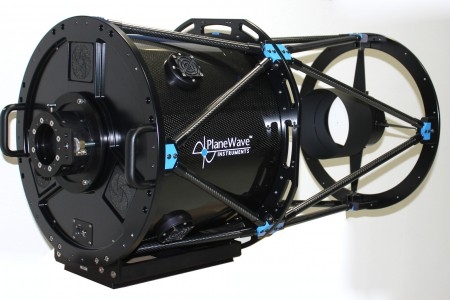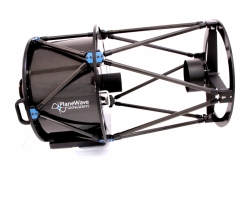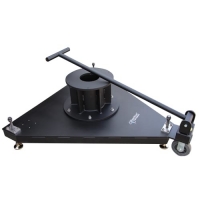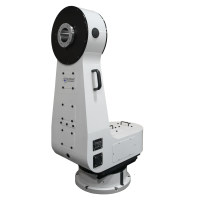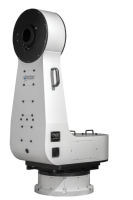PlaneWave CDK17 Telescope
Starting Price: $26,000.00
Price as Configured: $26,000.00
Price as Configured: $26,000.00
Brand: PlaneWave Instruments / SKU: PW-170101Q
The CDK17 from PlaneWave Instruments is a testament to advanced engineering and innovation, specifically designed for astrophotographers and astronomers seeking high-level performance. This telescope integrates PlaneWave’s precision optics and durable construction to provide exceptional image quality across various observational and scientific applications.
The CDK17 stands out with its robust specifications and features:
- 17-inch (432 mm) aperture
- 2939 mm focal length
- f/6.8 focal ratio
- 262.33 mm back focus from mounting surface
- Perfectly flat field across the entire 70mm image circle
- No off-axis coma or astigmatism
- Rock-solid fused silica mirrors with low thermal expansion
- Lightweight and rigid carbon fiber optical tube assembly
NOTE: Shipping cost will be determined after the order is made and must be paid before the telescope will ship. A shipping quote can be obtained on request.

Need help deciding?
Tell us what you're looking for, and we’ll point you in the right direction. Email Us.
Tell us what you're looking for, and we’ll point you in the right direction. Email Us.
Large Aperture and Moderate Focal Ratio
The CDK17 features a 432 mm aperture and an f/6.8 focal ratio. This combination enhances its capability to capture deep-sky objects with exceptional detail, offering excellent light-gathering efficiency and a broad field of view suitable for advanced research and high-quality imaging.
Advanced Optical Design
Equipped with a state-of-the-art Corrected Dall-Kirkham optical system, the CDK17 delivers outstanding image clarity. Its innovative design eliminates off-axis coma and astigmatism. It provides a perfectly flat field, ensuring images are sharp and detailed across the entire field of view with minimal need for post-processing.
Robust Mechanical Structure
Constructed with a carbon fiber optical tube, the CDK17 is lightweight and durable. Its design minimizes thermal expansion, ensuring minimal focus shift with temperature changes, making it ideal for extended observing sessions under varying environmental conditions.
High-Performance Mirrors and Coatings
Using fused silica mirrors, the CDK17 maintains precise optical alignment and surface accuracy, even amid temperature fluctuations. The high-quality coatings enhance light transmission and reduce stray light, optimizing performance for specialized observational tasks.
Thermal Management
The CDK17 is equipped with cooling fans and a Delta-T ready system to achieve thermal equilibrium swiftly. These features help to minimize air turbulence within the tube, thus reducing image distortion and maintaining consistent imaging quality.
Integrated Dew Control
The telescope incorporates advanced dew prevention technology with heater pads controlled by PlaneWave’s software. This ensures that optical surfaces remain clear of condensation during humid conditions, thus maintaining clear and consistent imaging performance.
Application-Specific Benefits
Astrophotography
With its large image circle and exceptional field flatness, the CDK17 allows astrophotographers to capture expansive and breathtaking views of the cosmos with incredible detail and clarity.
Astronomy Research
The precise and stable imaging capabilities of the CDK17 make it an invaluable tool for academic institutions and observatories engaged in complex astronomical research, including deep-sky surveys and detailed photometric studies.
Visual Observations
The CDK17 excels in visual observation, offering bright and crisp views ideal for star parties and serious visual astronomy. The telescope's superior optical quality provides stunning views of planetary, lunar, and deep-sky objects, making every viewing session a remarkable experience.
Space Situational Awareness (SSA) and Space Domain Awareness (SDA)
The CDK17 also lends itself to Space Situational Awareness and Space Domain Awareness applications. Its capability to provide detailed observations can be essential for tracking and monitoring satellites and other space debris, contributing valuable data for space traffic management and safety initiatives.

